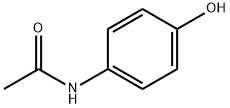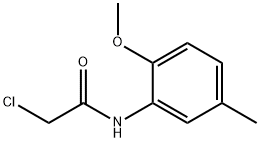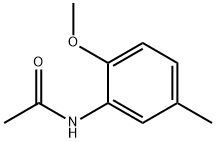2-Acetamido-4-methylphenol
- CAS NO.:6375-17-3
- Empirical Formula: C9H11NO2
- Molecular Weight: 165.19
- MDL number: MFCD00020183
- EINECS: 228-934-6
- SAFETY DATA SHEET (SDS)
- Update Date: 2024-12-18 14:15:30

What is 2-Acetamido-4-methylphenol?
Chemical properties
needles
General Description
Solid.
Reactivity Profile
Compounds in this group do not behave as organic alcohols, as one might guess from the presence of a hydroxyl (-OH) group in their structure. Instead, they react as weak organic acids. Phenols and cresols are much weaker as acids than common carboxylic acids (phenol has Ka = 1.3 x 10^[-10]). These materials are incompatible with strong reducing substances such as hydrides, nitrides, alkali metals, and sulfides. Flammable gas (H2) is often generated, and the heat of the reaction may ignite the gas. Heat is also generated by the acid-base reaction between phenols and bases. Phenols are sulfonated very readily (for example, by concentrated sulfuric acid at room temperature). The reactions generate heat. Phenols are also nitrated very rapidly, even by dilute nitric acid. Nitrated phenols often explode when heated. Many of them form metal salts that tend toward detonation by rather mild shock. Flammable gases are formed by the reaction of organic amides with strong reducing agents. Amides are very weak bases (weaker than water). Mixing amides with dehydrating agents such as P2O5 or SOCl2 generates the corresponding nitrile. The combustion of these compounds generates mixed oxides of nitrogen (NOx).
Fire Hazard
Flash point data for 2-Acetamido-4-methylphenol are not available. 2-Acetamido-4-methylphenol is probably combustible.
Properties of 2-Acetamido-4-methylphenol
| Melting point: | 151 °C |
| Boiling point: | 336.5±30.0 °C(Predicted) |
| Density | 1.203±0.06 g/cm3(Predicted) |
| storage temp. | Inert atmosphere,Room Temperature |
| form | powder to crystal |
| pka | 9.57±0.48(Predicted) |
| color | White to Light yellow |
| CAS DataBase Reference | 6375-17-3(CAS DataBase Reference) |
| EPA Substance Registry System | 2'-Hydroxy-5'-methylacetanilide (6375-17-3) |
Safety information for 2-Acetamido-4-methylphenol
| Signal word | Warning |
| Pictogram(s) |
 Exclamation Mark Irritant GHS07 |
| GHS Hazard Statements |
H315:Skin corrosion/irritation H319:Serious eye damage/eye irritation H335:Specific target organ toxicity, single exposure;Respiratory tract irritation |
| Precautionary Statement Codes |
P261:Avoid breathing dust/fume/gas/mist/vapours/spray. P304+P340:IF INHALED: Remove victim to fresh air and Keep at rest in a position comfortable for breathing. P305+P351+P338:IF IN EYES: Rinse cautiously with water for several minutes. Remove contact lenses, if present and easy to do. Continuerinsing. P405:Store locked up. |
Computed Descriptors for 2-Acetamido-4-methylphenol
New Products
4-Fluorophenylacetic acid 4-Methylphenylacetic acid N-Boc-D-alaninol N-BOC-D/L-ALANINOL Tert-butyl bis(2-chloroethyl)carbamate 3-Morpholino-1-(4-nitrophenyl)-5,6-dihydropyridin- 2(1H)-one Furan-2,5-Dicarboxylic Acid Tropic acid S-2-CHLORO PROPIONIC ACID ETHYL ISOCYANOACETATE 2-Bromo-1,3-Bis(Dimethylamino)Trimethinium Hexafluorophosphate (6-METHYL-[1,3]DITHIOLO[4,5-b]QUINOXALIN-2-ONE INDAZOLE-3-CARBOXYLIC ACID 4-IODO BENZOIC ACID (2-Hydroxyphenyl)acetonitrile 4-Bromopyrazole 5,6-Dimethoxyindanone 2-(Cyanocyclohexyl)acetic acid 4-methoxy-3,5-dinitropyridine 2-aminopropyl benzoate hydrochloride 1-(4-(aminomethyl)benzyl)urea hydrochloride diethyl 2-(2-((tertbutoxycarbonyl)amino) ethyl)malonate tert-butyl 4- (ureidomethyl)benzylcarbamate Ethyl-2-chloro((4-methoxyphenyl)hydrazono)acetateRelated products of tetrahydrofuran






![2-[(2-FURYLMETHYL)AMINO]-N-(2-METHOXY-5-METHYLPHENYL)-2-THIOXOACETAMIDE](https://img.chemicalbook.in/StructureFile/ChemBookStructure2/GIF/CB5190627.gif)
![N1-[2-(4-CHLORO-3,5-DIMETHYLPHENOXY)-5-(TRIFLUOROMETHYL)PHENYL]-2,3,3-TRICHLOROACRYLAMIDE](https://img.chemicalbook.in/StructureFile/ChemBookStructure2/GIF/CB7245675.gif)
You may like
-
 2'-Hydroxy-5'-methylacetanilide CAS 6375-17-3View Details
2'-Hydroxy-5'-methylacetanilide CAS 6375-17-3View Details
6375-17-3 -
 6''-HYDROXY-M-ACETOTOLUIDIDE CAS 6375-17-3View Details
6''-HYDROXY-M-ACETOTOLUIDIDE CAS 6375-17-3View Details
6375-17-3 -
 1975-50-4 98%View Details
1975-50-4 98%View Details
1975-50-4 -
 2-HYDROXY BENZYL ALCOHOL 98%View Details
2-HYDROXY BENZYL ALCOHOL 98%View Details
90-01-7 -
 2-Chloro-1,3-Bis(Dimethylamino)Trimethinium Hexafluorophosphate 221615-75-4 98%View Details
2-Chloro-1,3-Bis(Dimethylamino)Trimethinium Hexafluorophosphate 221615-75-4 98%View Details
221615-75-4 -
 61397-56-6 CIS BROMO BENZOATE 98%View Details
61397-56-6 CIS BROMO BENZOATE 98%View Details
61397-56-6 -
 14714-50-2 (2-Hydroxyphenyl)acetonitrile 98+View Details
14714-50-2 (2-Hydroxyphenyl)acetonitrile 98+View Details
14714-50-2 -
 118753-70-1 98+View Details
118753-70-1 98+View Details
118753-70-1